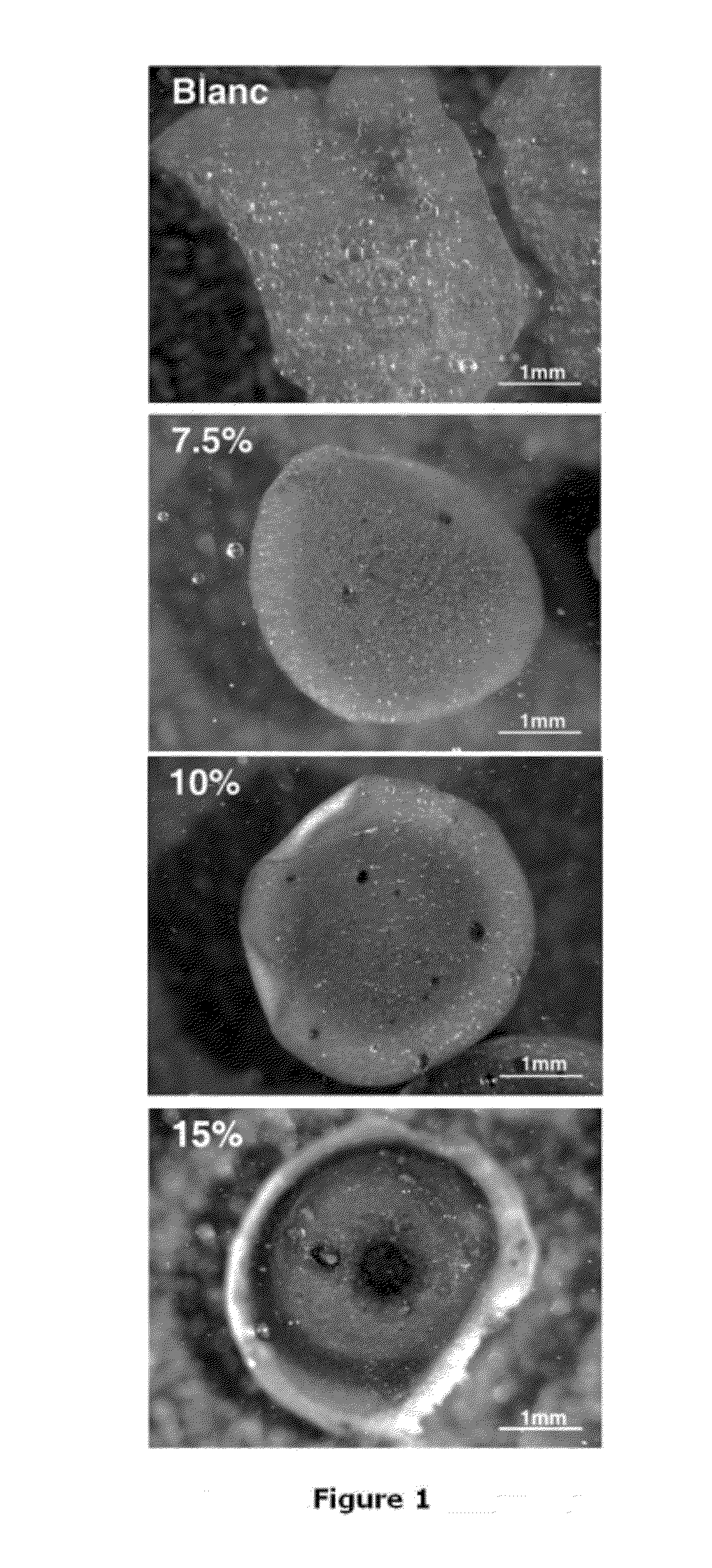Microcapsules containing salts for food products
a technology of food products and microcapsules, which is applied in the field of microcapsules containing salts for food products, can solve the problems of unsatisfactory functional and sensory consequences, limited use, and increased risk of interactions
- Summary
- Abstract
- Description
- Claims
- Application Information
AI Technical Summary
Benefits of technology
Problems solved by technology
Method used
Image
Examples
example 1
Preparation of Calcium Microcapsules
[0037]
Ingredient%Medium Chain Triglycerides oil 8.0%Tricalcium phosphate (TCP) 5.0%Glycerin 0%Agar 1.0%Gelatin type B (from fish)11.0%Water75.0%[0038]i. Preparation of TCP emulsion: Tricalcium phosphate (10 g) was blended with water (26 g) and mixed thoroughly with MCT oil (16 g) and glycerin (2 g) using an ultra-turrax mixer to form an emulsion.[0039]ii. Preparation of the gelatin / agar mixture: Gelatin (22 g) was hydrated in water (60 g) for 30 minutes and heated to 50° C. Agar (2 g) was dispersed in water (62 g) and heated to 55° C. and immediately added to the hot gelatin solution and mixed thoroughly.
[0040]The TCP emulsion was added quickly to the gelatin / agar preparation followed by continuous mixing to form a homogeneous thick mass. The latter was allowed to fall dropwise via a 0.5 mm hole into a cold (4° C.) MCT oil bath. The resulting microcapsules were recovered by filtration or decantation.
example 2
Preparation of Calcium Microcapsules with Glycerin as Plasticizer
[0041]
Ingredient%Medium Chain Triglycerides oil 8.0%Tricalcium phosphate (TCP) 5.0%Glycerin 1%Agar 1.0%Gelatin type B (from fish)11.0%Water74.0%
[0042]Microcapsules were prepared in a similar manner to example 1 except for the addition of the glycerin plasticizer in the gelatin / agar preparation.
example 3
Preparation of Fish Oil Microcapsules
[0043]
Ingredient%Fish oil (PUFA) 8.0%Tricalcium phosphate (TCP) 5.0%Glycerin 1%Agar 1.0%Gelatin type B (from fish)11.0%Water74.0%
[0044]Microcapsules were prepared in a similar manner to example 1 except for the substitution of MCT oil in the TCP emulsion by fish oil.
PUM
 Login to View More
Login to View More Abstract
Description
Claims
Application Information
 Login to View More
Login to View More - R&D
- Intellectual Property
- Life Sciences
- Materials
- Tech Scout
- Unparalleled Data Quality
- Higher Quality Content
- 60% Fewer Hallucinations
Browse by: Latest US Patents, China's latest patents, Technical Efficacy Thesaurus, Application Domain, Technology Topic, Popular Technical Reports.
© 2025 PatSnap. All rights reserved.Legal|Privacy policy|Modern Slavery Act Transparency Statement|Sitemap|About US| Contact US: help@patsnap.com

